Leaning Tower of Pisa Italy: Best Secrets Behind Its Tilt & How to Visit
Want to visit the Leaning Tower of Pisa Italy? Discover ticket tips, best photo spots, climbing secrets, and nearby hidden gems in Tuscany. Your ultimate guide to Pisa's iconic landmark!
Table of Contents
The Leaning Tower of Pisa, known as the Torre Pendente di Pisa in Italian, is one of the most iconic landmarks in the world. Nestled in the charming city of Pisa, Tuscany, this architectural marvel has fascinated visitors for centuries. As a local resident, I'm excited to share an in-depth look at this remarkable structure, offering insights into its history, cultural significance, and practical information for those planning a visit.
Historical Background
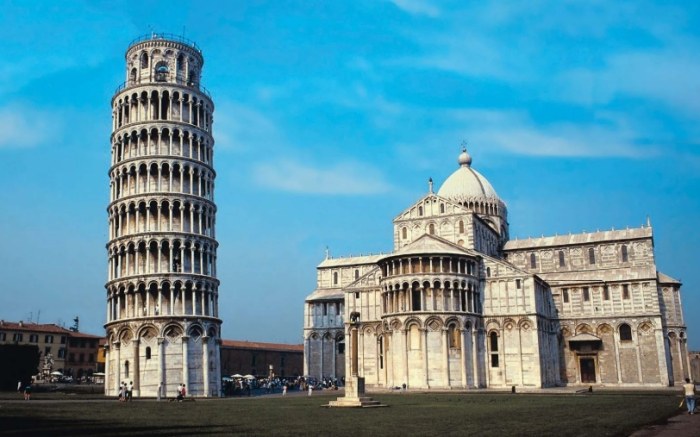
Origins and Construction
The Leaning Tower of Pisa was initially conceived as a bell tower for the adjacent Pisa Cathedral. Construction began in 1173 under the supervision of architect Bonanno Pisano. However, shortly after the third floor was completed, the tower began to tilt due to the soft ground beneath it, which couldn't adequately support the structure's weight.
Construction Challenges and Delays
Over the next two centuries, construction was halted multiple times due to wars and financial difficulties. The tower's tilt worsened during this period, with subsequent architects attempting to correct the lean by adjusting the height of the floors on the south side. Despite these efforts, the tower continued to lean, eventually reaching its current angle of approximately 3.99 degrees.
Modern Stabilization Efforts
In the late 20th century, engineers launched a massive stabilization project to prevent the tower from collapsing. The project, completed in 2001, involved removing soil from beneath the higher side of the tower and installing lead counterweights. These measures successfully reduced the tower's tilt by about 45 centimeters, ensuring its stability for future generations.
Cultural Significance
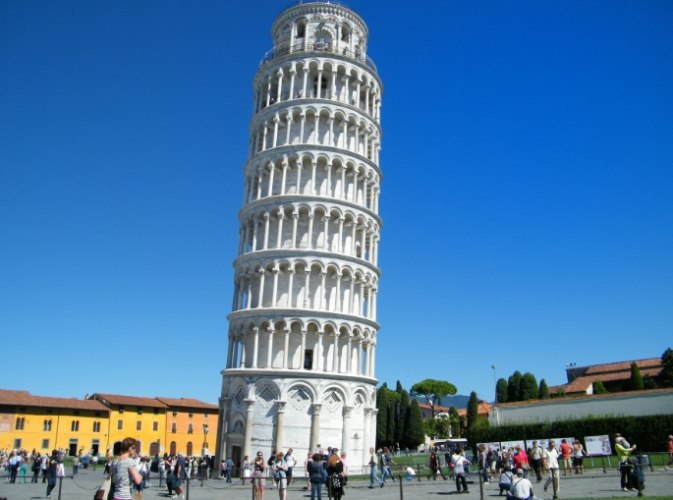
Symbol of Pisa and Italy
The Leaning Tower of Pisa has become synonymous with the city of Pisa and, by extension, Italy itself. It is a symbol of the country's rich architectural heritage and a testament to human ingenuity and perseverance. The tower's unique tilt has made it a popular subject for photographers, artists, and tourists alike.
UNESCO World Heritage Site
In 1987, the Leaning Tower of Pisa, along with the Piazza dei Miracoli (Square of Miracles) and the surrounding cathedral, baptistery, and cemetery, was designated a UNESCO World Heritage Site. This recognition highlights the site's cultural and historical importance on a global scale.
Influence on Popular Culture
The tower's fame has permeated popular culture, appearing in countless films, television shows, and advertisements. It has also inspired numerous parodies and replicas worldwide, further cementing its status as a cultural icon.
Natural and Human Landscapes
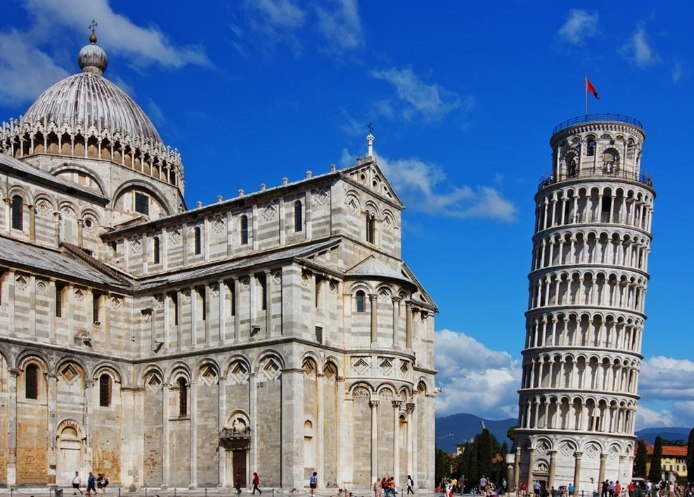
Piazza dei Miracoli
The Leaning Tower of Pisa is situated within the Piazza dei Miracoli, a stunning square that is home to several other architectural wonders. The square's lush green lawns, surrounded by ancient walls, provide a serene backdrop for the tower and its neighboring structures.
Pisa Cathedral
Adjacent to the tower is the Pisa Cathedral, a masterpiece of Romanesque architecture. The cathedral's intricate facade, adorned with sculptures and mosaics, is a sight to behold. Inside, visitors can marvel at the stunning interior, featuring a beautiful marble pulpit and a magnificent dome.
Baptistery of St. John
The Baptistery of St. John, located near the tower, is another notable structure in the Piazza dei Miracoli. Known for its unique acoustic properties, the baptistery's interior echoes with the sound of voices, creating a mesmerizing experience for visitors.
Camposanto Monumentale
The Camposanto Monumentale, or Monumental Cemetery, is a peaceful oasis within the Piazza dei Miracoli. This ancient cemetery is home to numerous frescoes and tombs, offering a glimpse into Pisa's rich history and cultural heritage.
Practical Information
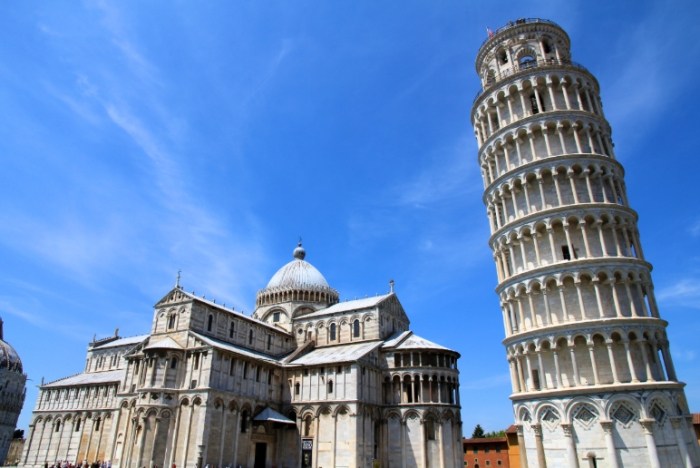
Visiting Hours
The Leaning Tower of Pisa is open to visitors year-round, with varying hours depending on the season.
- April to September: 9:00 AM - 8:00 PM
- October to March: 9:00 AM - 6:00 PM
It's important to note that the tower may close early on certain days for maintenance or special events. Visitors are advised to check the official website for the most up-to-date information.
Ticket Prices
Admission to the Leaning Tower of Pisa requires a ticket, which can be purchased online or at the ticket office.
- Adults: €18
- Children (ages 8-18): €14
- Children (under 8): Free
Tickets include access to the tower's interior, as well as the Piazza dei Miracoli and its other structures. It's recommended to book tickets in advance, especially during peak tourist seasons, to avoid long lines.
Transportation
Pisa is easily accessible by train, bus, or car.
- Train: Pisa Centrale is the main train station, located approximately 1.5 kilometers from the Piazza dei Miracoli. From the station, visitors can take a short walk or hop on a bus to reach the tower.
- Bus: Several bus lines connect the city center with the Piazza dei Miracoli. The LAM Rossa line, in particular, stops directly in front of the square.
- Car: If driving, visitors can park in one of the several paid parking lots located near the Piazza dei Miracoli. However, due to limited parking and heavy traffic, using public transportation is often more convenient.
Best Time to Visit
The best time to visit the Leaning Tower of Pisa is during the shoulder seasons of spring (April to May) and fall (September to October). During these periods, the weather is mild, and crowds are smaller compared to the peak summer months.
- Spring: The square is adorned with blooming flowers, and the weather is perfect for exploring the area on foot.
- Fall: The cooler temperatures and fewer tourists make for a more relaxed and enjoyable visit.
Special Experiences
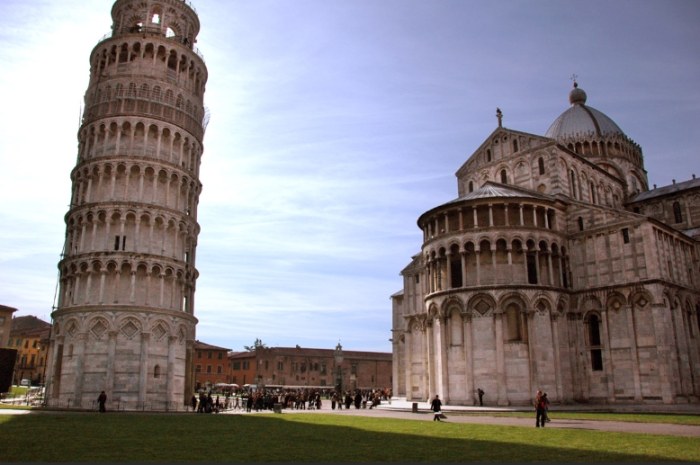
Climbing the Tower
One of the highlights of visiting the Leaning Tower of Pisa is the opportunity to climb to the top. The tower has 294 steps, leading visitors through its narrow spiral staircase to the observation deck at the top. From here, visitors can enjoy breathtaking views of the Piazza dei Miracoli and the surrounding city.
Photography Opportunities
The Leaning Tower of Pisa offers countless photography opportunities. Visitors can capture the tower's unique tilt from various angles, including the famous "holding up the tower" pose. The best time for photography is early morning or late afternoon, when the light is soft and the crowds are smaller.
Guided Tours
For a more in-depth experience, consider joining a guided tour of the Piazza dei Miracoli. Knowledgeable guides can provide fascinating insights into the history and architecture of the tower and its neighboring structures. Many tours also include skip-the-line access, allowing visitors to avoid long queues.
Accommodation Recommendations
Luxury Hotels
For those seeking a luxurious stay, Pisa offers several high-end hotels within easy reach of the Leaning Tower.
- Hotel Relais dell'Orologio: This boutique hotel, housed in a 15th-century palace, offers elegant rooms and a central location just steps from the Piazza dei Miracoli.
- Grand Hotel Duomo: Located opposite the Pisa Cathedral, this four-star hotel features stylish rooms, a rooftop terrace, and a Michelin-starred restaurant.
Mid-Range Options
For a more budget-friendly stay, consider one of Pisa's mid-range hotels.
- Hotel Touring: Situated near the Pisa Centrale train station, this hotel offers comfortable rooms and easy access to public transportation.
- Hotel La Pace: Located in the heart of the city, this hotel provides modern amenities and a convenient location for exploring Pisa's attractions.
Budget-Friendly Choices
For travelers on a tight budget, Pisa has several hostels and guesthouses that offer affordable accommodation.
- Ostello Bello Pisa: This popular hostel, located near the Piazza dei Miracoli, offers dormitory-style rooms and private accommodations, as well as a communal kitchen and lounge area.
- Hotel Alessandro della Spina: Situated in the city center, this budget hotel provides clean and comfortable rooms at an affordable price.
Culinary Delights
Traditional Tuscan Cuisine
Pisa is renowned for its delicious Tuscan cuisine, which features fresh, locally sourced ingredients and simple, hearty dishes.
- Pappa al Pomodoro: A thick tomato and bread soup, often flavored with garlic, basil, and olive oil.
- Ribollita: A hearty vegetable and bread stew, typically made with kale, beans, and stale bread.
- Bistecca alla Fiorentina: A thick, grilled T-bone steak, seasoned with salt, pepper, and olive oil.
Local Specialties
In addition to traditional Tuscan dishes, Pisa has several local specialties that are worth trying.
- Cecina: A savory chickpea flour pancake, often served as a street food snack.
- Zuppa Inglese: A layered dessert made with sponge cake, custard, and fruit, similar to English trifle.
- Gelato: Pisa is home to several excellent gelaterias, offering a wide variety of flavors, from classic vanilla and chocolate to more exotic options like pistachio and fig.
Recommended Restaurants
For an authentic dining experience, consider visiting one of Pisa's top-rated restaurants.
- Osteria dei Cavalieri: This cozy restaurant, located near the Piazza dei Miracoli, specializes in traditional Tuscan cuisine, with a focus on locally sourced ingredients.
- La Ghiandaia: Situated in the historic center of Pisa, this restaurant offers a refined dining experience, with a menu that features modern interpretations of classic Tuscan dishes.
- Gelateria De' Coltelli: For a sweet treat, head to this popular gelateria, known for its creamy, artisanal gelato made with high-quality ingredients.
Tips for Visitors
Dress Code
When visiting the Leaning Tower of Pisa and its neighboring structures, it's important to dress appropriately. Shoulders and knees must be covered when entering religious sites, such as the Pisa Cathedral and Baptistery. Comfortable shoes are also recommended, as the climb to the top of the tower involves a significant number of steps.
Safety
While the Leaning Tower of Pisa is generally safe for visitors, it's important to be aware of your surroundings and take precautions against pickpocketing, especially in crowded areas. Keep your belongings secure and avoid displaying valuable items in public.
Accessibility
The Leaning Tower of Pisa is not fully accessible for visitors with mobility impairments. The narrow spiral staircase and lack of elevators make it challenging for those with physical disabilities to climb the tower. However, the Piazza dei Miracoli and its other structures are accessible, and there are several viewing areas where visitors can admire the tower from ground level.
Photography Etiquette
When taking photos of the Leaning Tower of Pisa, be respectful of other visitors and avoid blocking pathways or obstructing views. If you're planning to take the famous "holding up the tower" pose, be mindful of your surroundings and avoid causing a disturbance.
Q&A
Can you still visit the Leaning Tower of Pisa?
Yes, the Leaning Tower of Pisa is open to visitors year-round, with varying hours depending on the season. Visitors can purchase tickets online or at the ticket office and climb to the top of the tower to enjoy breathtaking views of the Piazza dei Miracoli and the surrounding city.
Why is the Leaning Tower of Pisa famous?
The Leaning Tower of Pisa is famous for its unique tilt, which has made it a cultural icon and a popular tourist attraction. The tower's construction challenges, stabilization efforts, and historical significance have also contributed to its fame, making it a symbol of human ingenuity and perseverance.
Is the Leaning Tower of Pisa still leaning?
Yes, the Leaning Tower of Pisa is still leaning, although modern stabilization efforts have reduced its tilt by about 45 centimeters. The tower's current angle of approximately 3.99 degrees ensures its stability for future generations, while still maintaining its iconic appearance.
How long does it take to walk up the Leaning Tower of Pisa?
Climbing the Leaning Tower of Pisa takes approximately 30-45 minutes, depending on the visitor's pace and the number of people on the staircase. The tower has 294 steps, leading visitors through its narrow spiral staircase to the observation deck at the top. It's important to note that the climb can be physically demanding, and visitors are advised to take breaks as needed.